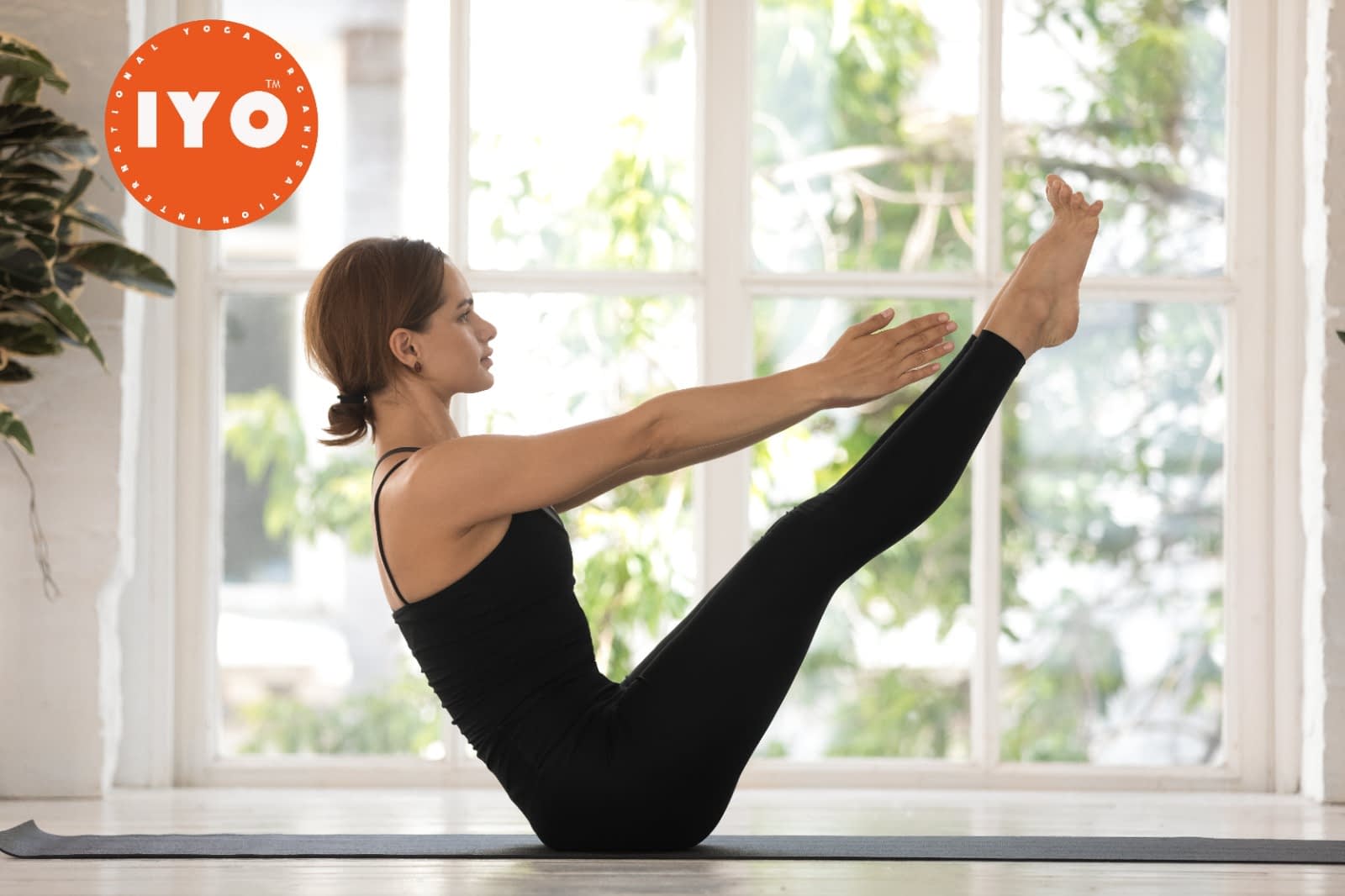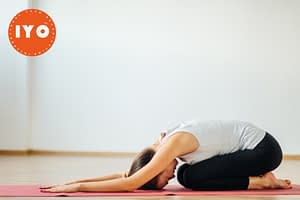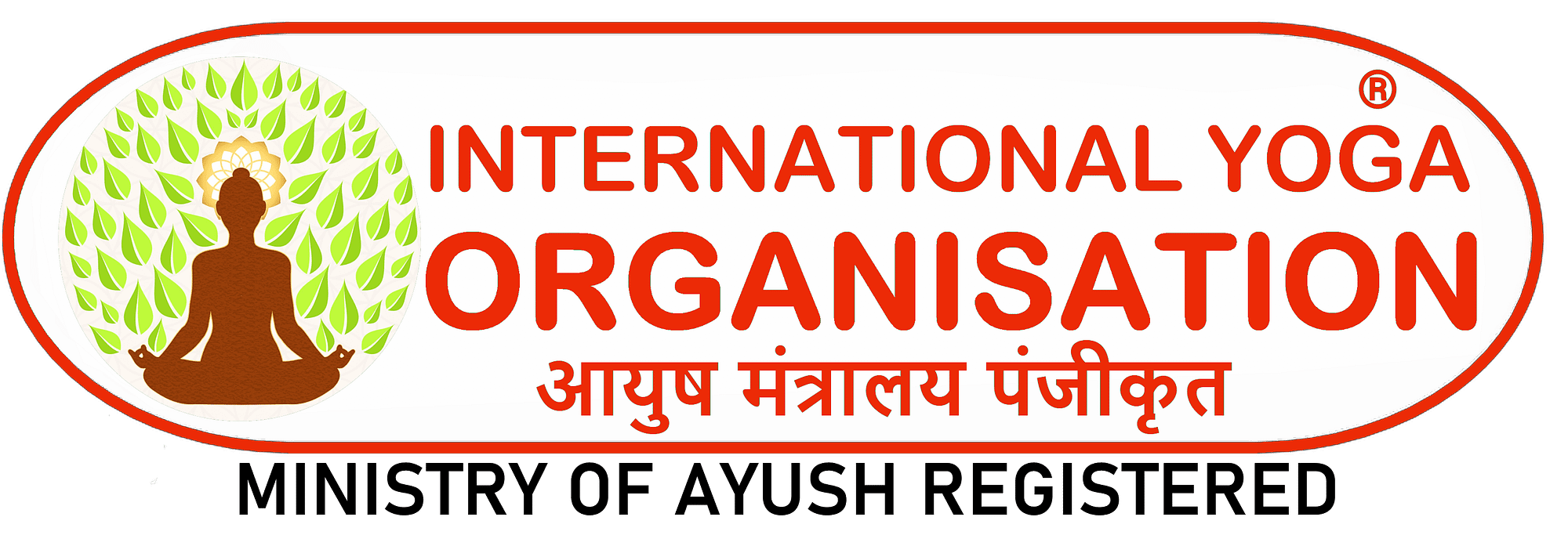
The IYO® Take the Forward Path
 Forward bends are important for several reasons. They’re wonderful for helping you to focus inward and quiet your mind. As your body bends forward, it folds your heart into its center. Forward bends are also important to balance backbends, so include a few of each in your IYO yoga practice.Forward bends are great for stretching out and loosening up the lower back muscles and also for lengthening the hamstrings.
Forward bends are important for several reasons. They’re wonderful for helping you to focus inward and quiet your mind. As your body bends forward, it folds your heart into its center. Forward bends are also important to balance backbends, so include a few of each in your IYO yoga practice.Forward bends are great for stretching out and loosening up the lower back muscles and also for lengthening the hamstrings.
Mudhasana: Child’s Pose
The child’s pose makes you feel safe and nurtured, as if you were still in the womb.Mudhasana (pronounced moo-DAH-sah-nah) activates your Venus and moon chakras(located behind your heart and at the base of your skull, respectively), relieves lower back pain, and improves your complexion. It also stimulates respiration because it compresses your diaphragm.
Uttanasana: Standing Head to Knees Pose
Uttanasana (pronounced OOH-tah-NAH-sah-nah) stretches the entire back of your body. It also tones your abdomen, decreases bloating, refreshes your mind, and clears your head. To accomplish this, you may have to bend your knees. As you become more flexible, you’ll be able to grasp your big toes with your index fingers. For those who can fold in half, give yourselves a hug!
Parshvottanasana: Feet Apart Side Angle Pose
In parshvottanasana (pronounced PARSH-voh-tah-NAH-sah-nah), you will tone your abdomen; straighten drooping shoulders; and make your hips, spine, and wrists more flexible.
Janu Shirshasana: Sitting One Leg Pose
In janu shirshasana (pronounced JAH-noo shur-SHAH-sah-nah), janu means “knee,” and shirsha means “head.” You may guess that this pose, then, involves bringing the head and knee together. The sitting one leg pose tones your abdomen, liver, spleen, and kidneys. It quiets your mind and aids digestion, as well as stretches and strengthens your lower back and chest. Men suffering from an enlarged prostate will benefit from this pose.
Ardha Baddha Padma Pashchimottanasana: Bound Half Lotus Pose
Ardha baddha padma pashchimottanasana (pronounced AHR-dah BAH-dah PAHD-mah PAH-shihmoh-tah-NAH-sah-nah) is identical to the sitting one leg pose, except that the foot of your bent leg is in a half lotus position, with one foot placed on the opposite thigh.
Yoga Mudra: Ego-Be-Gone!
Yoga mudra (pronounced YOH-gah MOO-drah) is a symbol of unity. This important pose inspires feelings of devotion and humility. It also stretches your legs and hips, opens your shoulders, and aids the gastrointestinal tract.
Naukasana: Boat Pose
A yogi holding naukasana (pronounced now-KAH-sah-nah) looks like a boat bobbing on the waves, and nauka literally means “ship.” This pose tones your stomach and intestines, strengthens your back, and activates your Mars chakra (located behind your navel).
In the boat pose, don’t hold your breath, even as you are concentrating on balancing.Your feet may fall to the floor at first. Whether you are doing the full boat pose or the half boat, keep your leg position steady and your knees together.
Kurmasana: Tortoise Pose
You’ll look like a tortoise when you practice kurmasana (pronounced koohr-MAH-sah-nah). It makes your lower spine more flexible. It also strengthens your neck, massages your thyroid, aids digestion, and rejuvenates your nervous system.Take it slow—just like a tortoise!Does the tortoise pose seem impossible? Simply lower yourself as far as you can, smile, and enjoy the journey to the floor, even if it takes many,many yoga practices. Tortoises are not in a hurry.They live loooong lives!
Adho Mukha Shvanasana: Downward Facing Dog Pose
Downward facing dog, adho mukhashvanasana (pronounced AH-doh MOO-kah shvah-NAH-sah-nah), brings heat to your body, strengthens and stretches your spine, and gives your heart a rest. This is one of the better known yoga poses—maybe because it feels so great to do it! Downward facing dog is easily adjustable for any flexibility level. It may also help to concentrate on stretching out your lower back.When you are flexible and strong enough to perform the downward facing dog fully and peacefully, you will place as much weight in your heels as you do in your hands.
➤ Forward-bending postures—such as standing head to knees, feet apart side angle, sitting one leg, bound half lotus, yoga mudra, boat, half boat, tortoise, and downward facing dog—help you to internalize and quiet your mind.
➤ Forward bends are great for loosening the lower back and stretching out the hamstrings.
➤ Forward bends and backbends balance each other and should be practiced together.


